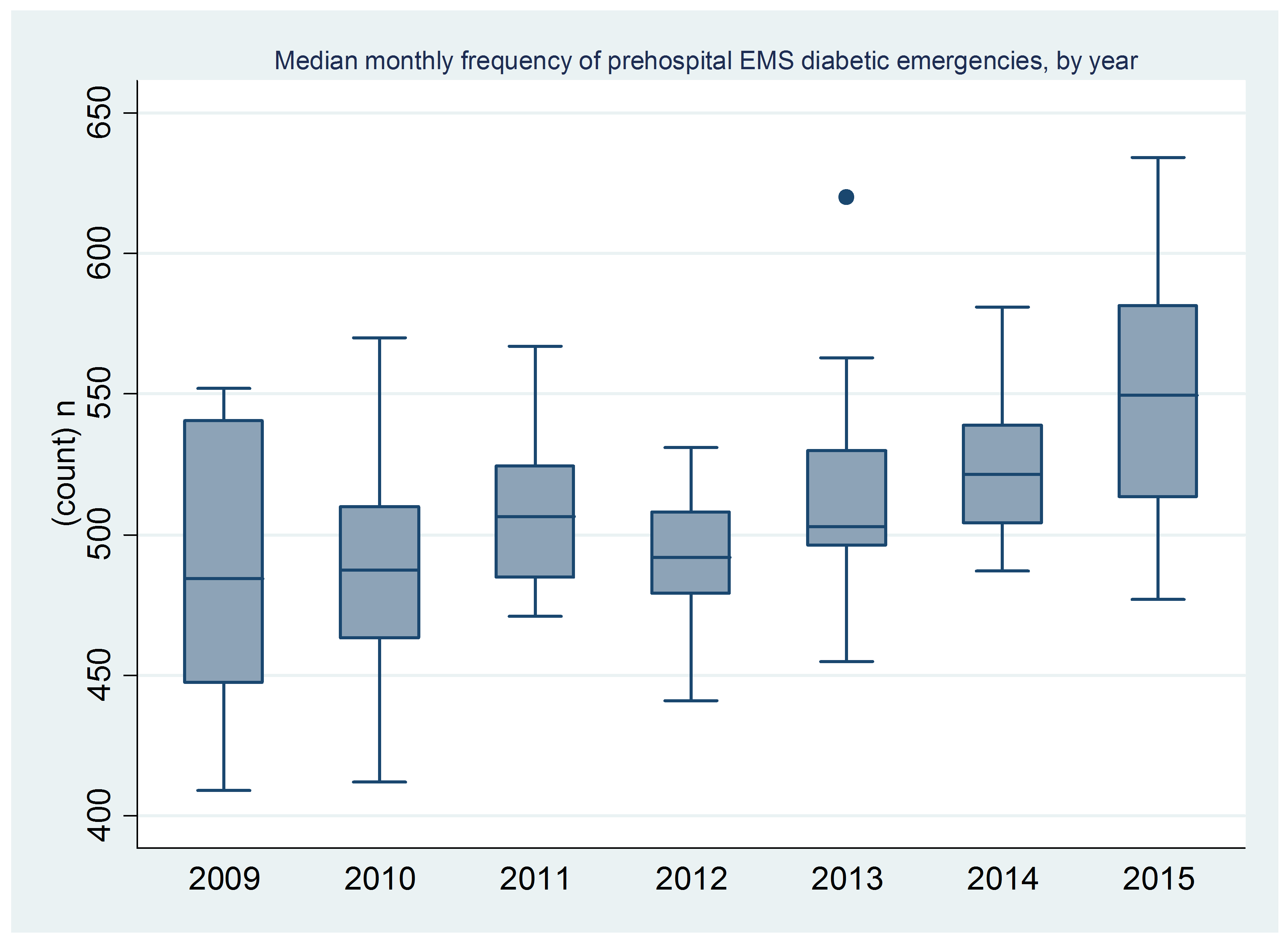Time series modelling to forecast prehospital Emergency Medical Service demand for diabetic emergencies (#272)
Introduction
Acute diabetic emergencies are often managed by prehospital emergency medical services (1). The projected growth in prevalence of diabetes (2) is likely to result in rising demand for these services (3), therefore efficient resource allocation will have increasing importance. The aims of this study were to quantify temporal trends in utilisation of prehospital EMS for acute diabetic emergencies and to generate a time series model to forecast future demand.
Methods
A longitudinal time series analysis on monthly case rates was conducted using data from the Ambulance Victoria electronic data warehouse between January 2009 and December 2015. All cases of hypoglycaemia and hyperglycaemia were included. Using the autoregressive integrated moving average (ARIMA) modelling process, we evaluated different formulations of the auto regressive, moving average and differencing terms. The data was separated into a training set (January, 2009 – August, 2014) and a validation set (January – December, 2015). The most parsimonious model with the lowest mean average percentage error (MAPE) was selected.
Findings
The mean monthly case count (± standard deviation) steadily increased throughout from 487 ± 52 in 2009 to 551 ± 47 in 2015. Initial visualisation of the data showed possible serial correlation and seasonality. The modelling process found that the ARIMA (0,1,1) model with a 12-month seasonality term provided the best fit. The moving average term was -0.88 (95% CI[-1.04, -0.71]), p < 0.001. This model generated a MAPE of 5.5%, demonstrating a good fit between the observed and predicted monthly values.
Significance
ARIMA time series models are a valuable tool to allow forecasting of future monthly cases of diabetic emergencies with very good accuracy. The model generated by this study may be used by service providers to allow appropriate planning and resource allocation of prehospital emergency medical services for diabetic emergencies.


- Leese GP, Wang J, Broomhall J, Kelly P, Marsden A, Morrison W, Frier BM, Morris AD: Frequency of severe hypoglycemia requiring emergency treatment in type 1 and type 2 diabetes: a population-based study of health service resource use. Diabetes Care 2003;26:1176-1180
- Magliano DJ, Peeters A, Vos T, Sicree R, Shaw J, Sindall C, Haby M, Begg SJ, Z ZP: Projecting the burden of diabetes in Australia - what is the size of the matter? Australian and New Zealand Journal of Public Health 2009;33:540-543
- Lowthian JA, Cameron PA, Stoelwinder JU, Curtis A, Currell A, Cooke MW, McNeil JJ: Increasing utilisation of emergency ambulances. Australian health review : a publication of the Australian Hospital Association 2011;35:63-69